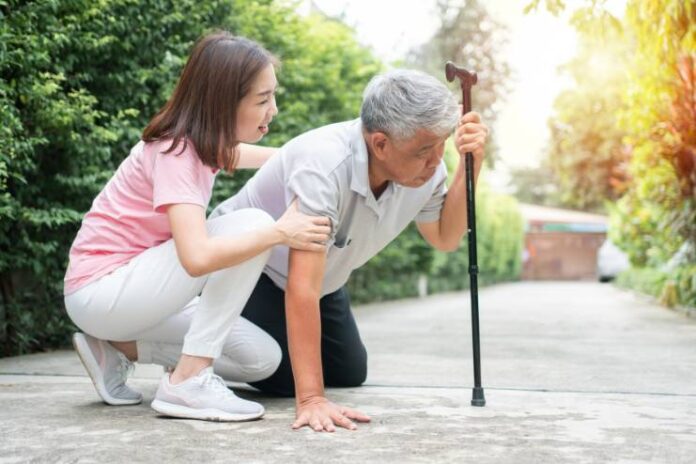Affiliate Disclaimer
Some links in this article are affiliate links. We may earn a small commission if you make a purchase through these links, at no extra cost to you. We only recommend products we find useful to our readersPreventing falls is essential among seniors and people with osteoporosis because they are prone to falls and fractures. In this article we focus on various ways to prevent falls and provide practical tips on home safety, effective balance exercises, and other preventive measures.
By implementing these tips, you can reduce the risk of fractures. Taking these preventive steps will help you avoid falls and fractures and give you peace of mind.
Understanding the Risk of Falls and Fractures
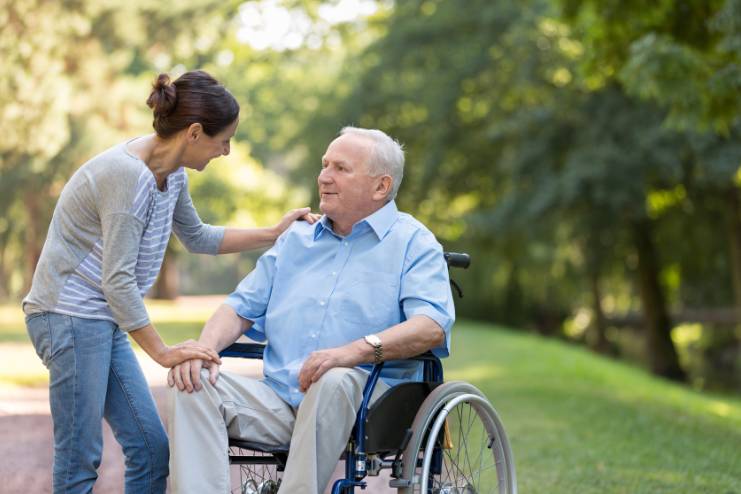
Osteoporosis is a condition that causes weakened bones and increases the risk of fractures, even from minor falls. Muscle strength and balance gradually reduce with age, increasing this risk and making fractures more likely. The effects of a fall can be severe, ranging from fractures in critical areas such as hips and wrists to affecting overall mobility and independence.
It’s essential to take preventive measures such as home safety enhancements and regular exercise to reduce the impact of fractures and maintain optimal health.
Home Safety Tips to Prevent Falls
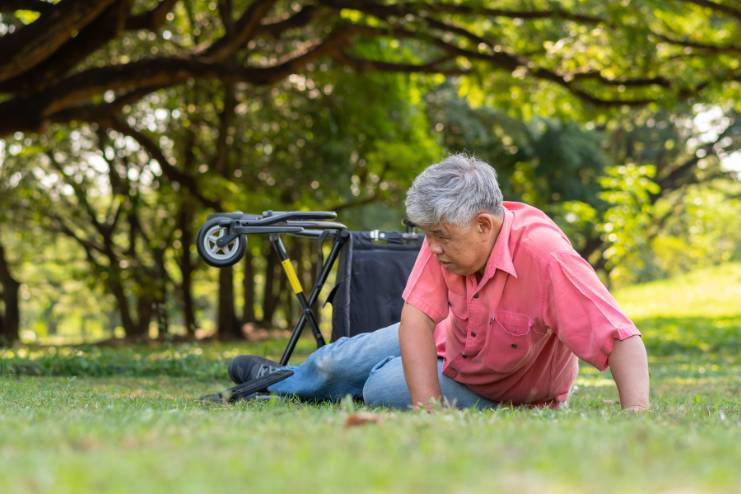
To reduce this risk among seniors and people with osteoporosis, we need to create a safe home environment. Here are some tips to enhance your home safety:
- Remove Tripping Hazards: Keep pathways free of obstacles. Clear any loose items on rugs, clutter, and remove electrical cords that can cause trips.
- Install Grab Bars: Place bathroom grab bars near toilets, tubs, and showers.
- Ensure Proper Lighting: Ensure all areas of your house, including staircases, entrances, and bathrooms, are well-lit so that seniors can see clearly and don’t hit anything on the way. Use bright, energy-efficient CFL bulbs of 12 watts or higher.
- Use Non-Slip Mats: Place non-slip mats in bathrooms and kitchens to prevent slipping on wet or slippery floors.
- Reduce Glare: Use sheer blinds to minimise daylight glare through glass doors and windows to improve visibility and prevent accidental bumps.
- Maintain Flooring: Repair or replace flooring when necessary. Make sure it isn’t slippery, especially the bathroom floor.
- Furniture Safety: Make sure chairs, beds, and tables are sturdy and firm so seniors do not slip while sitting on them. Remove any furniture with sharp corners to prevent injuries.
- Spill Prevention: Wipe up spills immediately so that there are no slippery surfaces.
- Clothing Awareness: Don’t wear long clothing to avoid trailing on the floor, which may cause tripping, especially at night.
- Choice of Footwear: Wear non-slip footwear instead of socks or loose slippers. This will maintain stable footing on the floor. Make sure your footwear fits you well.
By implementing these simple fall prevention tips you can reduce risk of injury.
Balance Exercises to Improve Stability
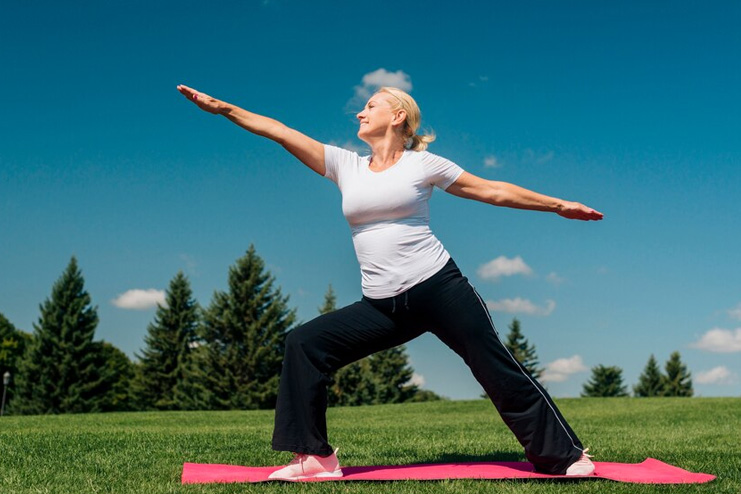
Balance exercises help seniors enhance their stability and lower the possibility of fractures. Characteristics that go with these exercises include muscle strengthening and coordination improvement. Here are some of the effective stability exercises suggested by experts for seniors:
- Tai Chi: Tai Chi is referred to as “meditation in motion.” A person moves through a series of postures slowly. These movements improve balance and strength. However, learning proper techniques to achieve maximum benefit requires an experienced instructor.
- Yoga: Yoga poses and stretches offer core strengthening and flexibility. These help maintain balance and stability. Learning from an experienced instructor is very important, so seniors do it without complications.
- Standing on One Leg: Support yourself by holding a sturdy chair if necessary, stand on one leg, and hold for 10-15 seconds. As you grow more adept over time, increase the duration, but try without support.
- Heel-Toe Walk: This involves walking along a straight line, putting the heel of one foot directly in front of the toes of the other. Use the wall or chair for balance, if needed, for about 20 steps. Gradually increase the number of steps and speed.
- Weight Shifts: Stand with feet hip-width. Slowly shift weight onto one leg, lifting the other foot off the floor; hold for up to 30 seconds and then switch sides. This exercise strengthens the legs and helps improve control of balance. As you start to balance better, gradually increase your time.
Strength Training for Fall Prevention
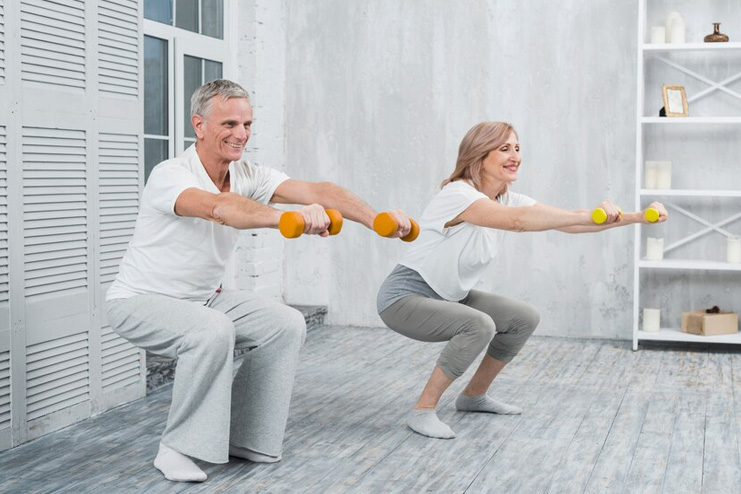
Strength training plays a key role in enhancing muscle strength and stability, which are essential for preventing falls. General muscle weakening with age can be reversed or alleviated through strength training exercises. Here are some effective strength training exercises for seniors:
- Squats: Stand with your feet at shoulder length, bend the knees, then lower the body back into a seated position while keeping your back straight. Keep knees from extending beyond toes. Aim to practise 10-15 reps to engage these muscles in the leg and pelvic region.
- Leg Lifts: Hold onto a chair for support and take one leg to the side, keeping it straight. Hold a few seconds, then lower your leg slowly. Do this exercise 10-15 times on each leg for strong thigh and hip muscle strengthening.
- Resistance Band Exercises: Using resistance bands, one can perform bicep curls, seated rows, and leg presses. Resistance bands are versatile because they can be modified to produce variable resistance levels, thus fitting different strength levels.
Find the best resistance bands here
Vision and Hearing Checkups
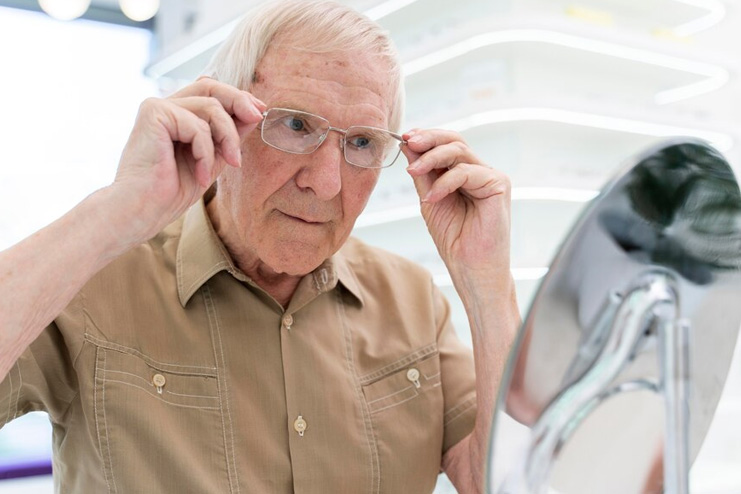
Regular vision and hearing checkups are important for fall prevention, particularly for seniors. Being sensibly healthy includes balance and objectivity about one’s environment. Sensory health plays an important role in maintaining balance and awareness of your surroundings. Impaired vision can cause difficulty detecting hazards, judging distances, and navigating uneven surfaces. This increases the risk due to loss of vision. Similarly, hearing loss can reduce the ability to hear warning sounds, such as an approaching vehicle or a caregiver’s alert.
Seniors should visit the eye doctor regularly for vision checkups. Conditions such as cataract or glaucoma must be diagnosed while still manageable. Make regular audiologist visits for a hearing checkup.
By keeping vision and hearing good, seniors can greatly minimise their risk and stay much steadier.
Medication Management
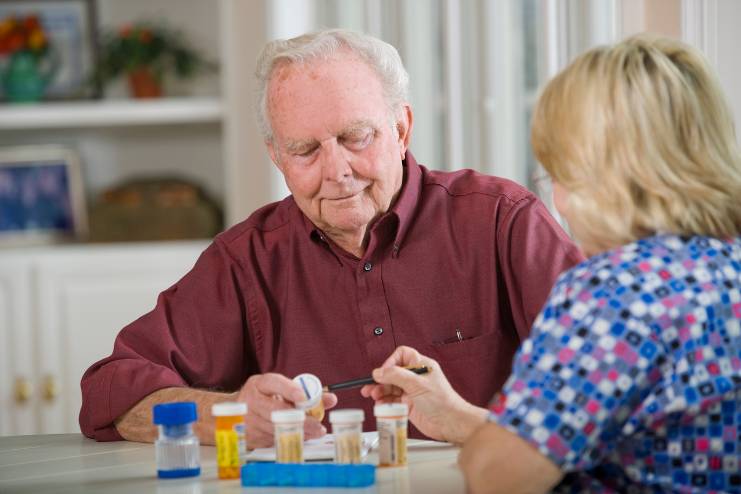
Medication management is essential for seniors. Certain medication side effects like dizziness, drowsiness, and impaired balance are a result of their effect on the central nervous system (CNS). Seniors should make a habit of frequently reviewing their medications with a doctor to identify any that could contribute to a risk of falling. .
Key Points of Medication Management:
- Regular Reviews: Schedule regular appointments with your healthcare provider to review all your prescribed and over-the-counter medications. This will help identify medications with side effects that will affect your balance or coordination.
- Monitor Side Effects: Note any new symptoms once a medication is started. They include drowsiness or unsteadiness. Report any such symptoms to your doctor.
- Avoid Overmedication: Overmedication leads to medication interactions that could elevate fall risk. Examine all prescription medications and ensure they are necessary and used as directed by a healthcare professional. Skipping or quitting any medication without consulting is strictly prohibited.
Also, read: How To Deal With Elderly Incontinence? Know What Science Suggest
Assistive Devices and Technology
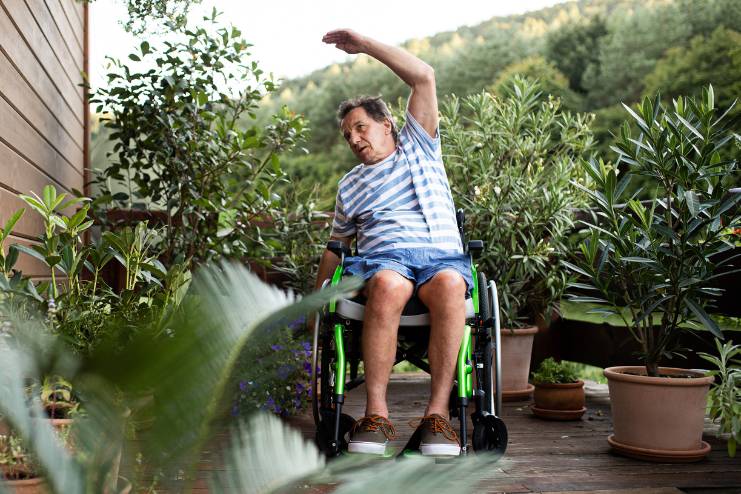
Assistive devices and fall prevention technology are important because they enhance stability and provide safety. These tools range from mobility aids to monitoring systems.
Some Assistive Devices and Technology
1. Mobility Aids:
- Canes and Walkers: These offer much-needed support and stability, especially in cases of weak muscles or complications with joints.
- Wheelchairs: Wheelchairs come either as manual or electric to be chosen as per an individual’s need.
2. Fall Detection Devices
- Wearable Fall Detectors: Wearable fall detectors work as pendants or wristbands; they can detect falls and send automatic alerts to caregivers to send help immediately.
- Home Monitoring Systems: These systems have motion sensors and video monitoring that track movements and detect unusual activity patterns, alerting caregivers in case of an emergency.
Footwear Choices for Fall Prevention
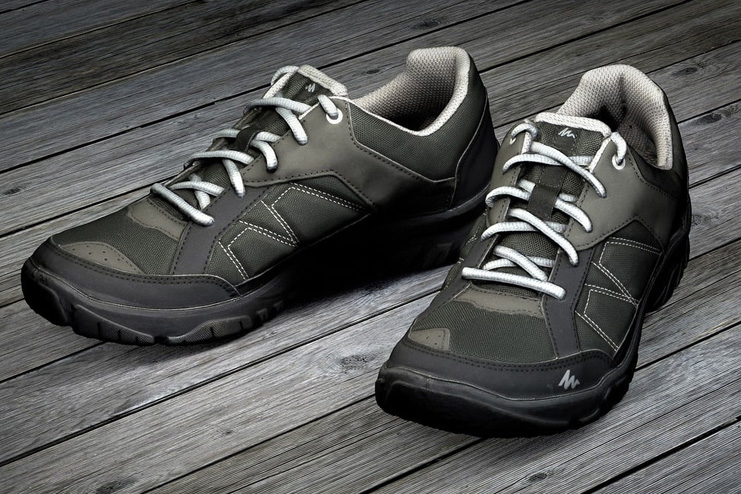
We cannot deny that shoes play a vital role in preventing falls, especially in older adults. Wearing comfortable and safe shoes can help reduce the risk of slipping and tripping.
Key Features of Fall-Prevention Footwear
- Non-Slip Soles: Non-slip shoes ideally provide good grip on any kind of surface. Look for shoes with rubber soles or any other slip-resistant material that provides good traction and avoids accidents.
- Proper Fit: Shoes should fit comfortably and be supportive, but neither loose nor tight. There should be enough space for toes to move around easily without feeling cramped.
- Secure Fastenings: Opt for those fastened tightly by shoelaces, Velcro, or straps.
- Low Heels: Avoid high heels, which can cause you to lose balance and increase your risk of injury. Opt for shoes with low heels (1 inch or lower) for better stability and support.
Tips for Putting on and Taking Off Shoes
- Use a Shoehorn: A long-handled shoe horn can make it easier to put on shoes without bending over.
- Elastic Shoelaces: These allow shoes to be slipped on and off easily without needing constant tying and untying.
- Velcro Fastenings: Shoes with Velcro are easier to adjust and secure than laces.
Also, read: Healthy Aging: Tips and Habits for a Vibrant Life After 50
Regular Health Checkups
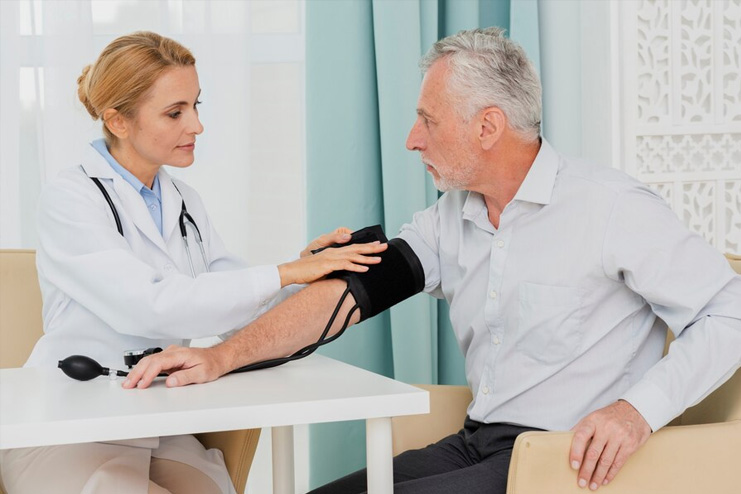
Regular health checkups can prevent accidents, especially in seniors. This step would support the early diagnosis of conditions that increase the risk of falling—like disorders of balance, vision, and hearing difficulties. It also helps in chronic diseases associated with risks of fractures.
Importance of Regular Health Checkups:
- Early Detection: Regular medical visits enable early diagnosis of health issues that could cause fractures. Conditions like osteoporosis, arthritis, and diabetes can have further impacts.
- Monitoring Health: Regular visits let one’s doctor monitor existing health conditions and change the treatment where necessary.
- Medication Review: Doctors can review all medications taken at health checkups. Some medications may contribute to the onset of dizziness or drowsiness, possibly increasing the risk. Their adjustment may impose stability and safety.
Regular checkups let us take preventive measures toward maintaining good health. These include vaccination, screening, and lifestyle corrections according to individual needs.
Doctors provide personalised advice on prevention strategies, such as exercise routines, dietary changes, and home modifications to enhance safety.
This will help them identify any possibility of accidents in time, and hence, a better quality of life.
Conclusion
Fall prevention is essential for reducing fracture risk and ensuring the safety and well-being of seniors. We now understand that balance exercises, strength training, regular vision and hearing checkups, medication management, the use of assistive devices, choosing appropriate footwear, and maintaining regular health checkups today are so important.
It’s important to consult healthcare professionals for personalised advice and to tailor these strategies to individual needs.
References
- https://www.betterhealth.vic.gov.au/health/healthyliving/falls-prevention-at-home
- https://www.webmd.com/fitness-exercise/ss/slideshow-ways-to-improve-balance
- https://www.nhsinform.scot/healthy-living/preventing-falls/keeping-well/prevent-falls-by-looking-after-your-vision-and-hearing
- https://callbeforeyoufall.com/assistive-devices-to-prevent-falls-in-elderly
- https://www.mskcc.org/cancer-care/patient-education/safe-shoes
In this Article













